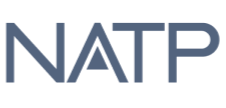💡 Key Takeaways
- IRS Fresh Start Program eligibility requirements hinge on compliance and financial hardship:
- All required tax returns must be filed
- Current taxes must be paid or arranged
- Applicants must demonstrate that they can’t pay the full amount immediately.
The IRS Fresh Start Program allows eligible taxpayers to resolve their tax debt through manageable payment plans, reduced tax settlements, or temporary IRS collection relief. Now is an excellent time to start your application and avoid accumulating interest and penalties.
This article walks taxpayers through the IRS Fresh Start Program requirements and eligibility rules, helping you determine which of the Fresh Start Programs you qualify for. We will also explain common myths and IRS forms you may need. For a broader overview of all the Fresh Start options, visit our complete IRS Fresh Start Program guide.
Who Qualifies for the IRS Fresh Start Program?
Taxpayers who are genuinely struggling to catch up on back taxes can qualify for the IRS Fresh Start Program if they meet specific eligibility requirements. Ideal candidates are individuals or business owners facing a tax burden so large that paying in full would cause significant financial strain.
Other qualified individuals include:
- Freelancers or self-employed professionals who experience a sharp drop in income.
- Wage earners facing job loss or medical emergencies.
- Entrepreneurs whose businesses suffer from economic recessions or unexpected operating costs.
What Are the Requirements for the IRS Fresh Start Program?
IRS Fresh Start Program requirements boil down to your current filing compliance, how much you owe, and your income. In essence, the IRS wants to see that taxpayers are both willing and able to meet future obligations, even if they cannot pay everything immediately.
Here are the four baseline eligibility criteria:
- All required tax returns filed and up-to-date.
- Total tax debt (including penalties and interest) is within program thresholds.
- No recent bankruptcy filings or criminal tax violations.
- Demonstrated inability to pay the full amount immediately.
The Fresh Start Program is not a one-size-fits-all solution. The table below compares four Fresh Start options by who qualifies, key eligibility rules, and payment terms.
Specific Program Eligibility Requirements
| Fresh Start Program Options | Who It's For | Core Eligibility Requirements | Payment Term |
|---|---|---|---|
| Installment Agreement | Individuals and businesses who can pay over time. |
|
Up to 72 months |
| Offer in Compromise | Taxpayers who cannot pay the full debt without severe financial hardship. |
|
Lump sum or 24 months |
| Currently Not Collectible | Taxpayers who are facing financial distress and cannot afford to pay anything. |
|
Temporary suspension or until CSED expiration |
| Penalty Abatement | Taxpayers who have a valid reason for late filing or payment. |
|
One-time reduction |
Consulting a licensed tax professional is the fastest way to confirm Fresh Start eligibility.
Fresh Start Program Eligibility in Detail
The IRS Fresh Start Program includes several tax relief tools. Each has unique requirements and benefits, depending on your situation.
Installment Agreements
An installment agreement, also known as an IRS payment plan, allows you to break down your balance into manageable monthly payments instead of facing the full amount all at once. The IRS offers several types of agreements, depending on how much you owe and what you can afford.
Streamlined Agreements
Best for taxpayers who owe $50,000 or less (including penalties and interest). Payments can be spread over up to 72 months, and no detailed financial disclosure is required.
Non-Streamlined Agreements
Designed for balances above $50,000 or when you can’t meet the streamlined terms. These require a full financial disclosure (Form 433-A or 433-F) to show the IRS your ability to pay.
Guaranteed Installment Agreements
Available if you owe $10,000 or less (not including penalties and interest), have filed and paid on time in the past five years, and can pay off the full balance within three years. This is the most straightforward option, and approval is almost automatic if you qualify.
Partial Payment Installment Agreements (PPIA)
For taxpayers who cannot pay the full amount before the IRS collection statute expires. You make monthly payments based on what you can afford, even if those payments won’t cover the full balance. The IRS will review your financial situation every two years to see if you can pay more.
Routine Installment Agreements
For debts that don’t fit neatly into the streamlined or guaranteed categories, routine agreements require direct negotiation with the IRS. Terms depend on your financial situation and ability to pay.
Confused about which payment plan to choose? Read our guide to How to Select the Right IRS Installment Agreement for You.
You can apply for an Installment Agreement online or by submitting Form 9465 with your tax return or separately if you already owe. For step-by-step instructions, read How to Set Up an IRS Payment Plan: Form 9465.
Offer in Compromise (OIC)
An Offer in Compromise is one of the most powerful tax relief tools available. It allows you to settle your tax debt for less than the full amount owed if paying in full would create serious financial hardship. The IRS looks closely at your income, expenses, assets, and future earning potential before making a decision.
There are three main types of OICs, each designed for different situations:
Doubt as to Collectibility
The most common type. You qualify when your financial situation shows that you cannot realistically pay the full balance before the statute of limitations expires. The IRS will evaluate your “reasonable collection potential” (RCP) to decide if a reduced settlement is justified.
Doubt as to Liability
This applies when you dispute whether the tax debt is correct. For example, if the IRS made an error in assessment or you have evidence proving the balance is wrong, you may qualify.
Effective Tax Administration (ETA)
Even if you technically could pay in full, you might qualify under ETA if doing so would cause severe economic hardship or would be unfair under your specific circumstances (such as a serious illness or disability).
Payment Options:
-
Lump Sum OIC: Pay the agreed amount in five or fewer installments within five months.
-
Periodic Payment OIC: Pay the settlement amount in monthly installments over 6–24 months.
While an OIC can provide incredible relief, the IRS approves only a small percentage of applications. That’s why professional guidance is crucial to prepare a strong case.
Currently Not Collectible (CNC)
Currently Not Collectible status is like hitting the “pause button” on IRS collections. If paying anything would leave you unable to cover basic living expenses, the IRS may agree to stop collection activities temporarily.
Key Features of CNC:
When you’re placed in CNC, the IRS suspends most aggressive actions like wage garnishments, bank levies, and collection calls. However, interest and penalties continue to build during this period, and the IRS may still file a federal tax lien to secure its claim. CNC is not permanent—the IRS will review your financial situation regularly, usually every year or two, to see if your ability to pay has changed. If it has, collection efforts can start up again.
Who Qualifies for CNC?
You may qualify for CNC if your income is just enough to cover necessities such as rent, utilities, groceries, and medical care, leaving nothing left for tax payments. The IRS also considers whether you have assets that could realistically be sold or used to pay down your balance. If you can show, through a Collection Information Statement (Form 433-F or 433-A), that you have no disposable income and little to no equity in your assets, you may be eligible.
Benefits of CNC:
The biggest benefit of CNC is immediate relief. It gives you space to stabilize your finances and reclaim peace of mind, free from constant IRS pressure. For some taxpayers, the statute of limitations on collection even expires while they remain in CNC status, meaning a portion of their debt may ultimately go uncollected. While it isn’t a forever fix, CNC can provide the breathing room you need to get back on track and plan for long-term financial stability.
CNC isn’t a permanent solution—but for many clients, it’s the relief they need while working toward long-term financial stability.
Penalty Abatement
Penalties can make an already difficult tax debt feel unmanageable. The IRS adds charges for late filing, late payment, and failure to pay estimated taxes, and these can quickly double or even triple what you originally owed. Fortunately, the Fresh Start Program includes relief in the form of penalty abatement—reductions or eliminations of these extra costs under specific circumstances.
First-Time Abatement (FTA)
The most common and accessible form of penalty relief is called First-Time Abatement. If you’ve generally played by the rules in the past, the IRS is more willing to give you a break. To qualify, you must have a clean compliance history for the last three years, meaning you filed all required returns and paid (or arranged to pay) any taxes due on time during that period. You also need to be current with all required filings for the year in question. When these conditions are met, the IRS may remove failure-to-file, failure-to-pay, or failure-to-deposit penalties for a single tax period—essentially giving you a fresh start.
Reasonable Cause
Not everyone qualifies for FTA, but there’s another avenue: reasonable cause relief. Here, the IRS looks at the circumstances behind your late payment or filing. If you can show that something truly outside your control prevented compliance, the IRS may agree to remove penalties. Common qualifying reasons include serious illness, natural disasters, the loss of essential records, or relying on incorrect advice from a tax professional. The key is documentation—you must prove that you acted responsibly but were unable to meet your tax obligations due to circumstances beyond your control.
Statutory Exceptions
In rare cases, penalties can also be lifted under statutory exceptions written into the tax code. These apply when the IRS itself made an error, when the law specifically allows forgiveness, or when you received official written advice from the IRS that later turned out to be wrong. While less common than FTA or reasonable cause, statutory exceptions can provide powerful relief if your situation fits the criteria.
Why Penalty Abatement Matters
Removing penalties doesn’t just lower your balance—it gives you breathing room and a realistic path forward. Interest will still accrue on the unpaid tax, but penalty relief can significantly reduce the total you owe and make repayment far more manageable. For many taxpayers, penalty abatement is the difference between staying stuck in debt and finally regaining control.

Common Myths About the IRS Fresh Start Program
When it comes to tax relief, misinformation spreads fast. Let’s clear up a few of the biggest myths so you know what’s real—and what isn’t.
- Myth: The Fresh Start Program erases all tax debt.
- Fact: The program helps reduce or restructure what you owe, but complete forgiveness is rare. Relief depends on your financial situation, compliance, and eligibility.
- Myth: Anyone can qualify for an Offer in Compromise.
- Fact: The IRS uses strict “reasonable collection potential” guidelines to decide who truly qualifies. If the IRS believes you can afford to pay, they won’t approve an OIC.
- Myth: Filing compliance isn’t required.
- Fact: You must be up to date on all required returns before the IRS will even consider your application. Compliance is the foundation of eligibility.
Can TaxRise Help Me with IRS Fresh Start Program Requirements?
Yes, TaxRise specializes in helping taxpayers and businesses with IRS Fresh Start Program requirements. We’ll review your financial situation, ensure every required tax return is filed, and prepare the documentation the IRS expects, helping you avoid costly mistakes and delays.
If you’re ready to regain control of your finances and resolve your tax liability, schedule a free consultation with TaxRise today to see if you qualify for the Fresh Start Program.
Frequently Asked Questions
If you haven’t filed past returns, you must submit them before the IRS will review any Fresh Start Program application. However, TaxRise can help you prepare and submit those returns as part of our service and ensure you are compliant with the IRS.
Yes, self-employed taxpayers may qualify for the Fresh Start Program if they can demonstrate their inability to pay the tax liability in full. Small business owners are likely to qualify if they experienced a significant income decline from previous years. You'll need to provide detailed profit/loss statements and documentation of the income reduction.
If the IRS rejects your Fresh Start Program application, you can correct the identified issues and resubmit. It helps if you do this with the assistance of a professional to help catch and prevent further problems. Most denials stem from incomplete documentation.
No, you do not need a tax professional to apply for tax relief. However, qualified tax professionals like Enrolled Agents significantly increase accuracy and approval chances, especially for complex cases. Professional representation also provides ongoing support through the compliance period.
Keep your tax resolution active by making all required payments on time, staying current with new tax filing obligations, and maintaining the financial conditions that qualified you for tax relief. Schedule regular compliance reviews to catch potential issues early.
At minimum, you’ll need your past tax returns, proof of income, expense records, and financial statements. Specific forms (like Form 433-F or Form 9465) depend on which relief option you pursue.
Yes, but the process is more complex. Debts over $50,000 typically require non-streamlined agreements and full financial disclosures. TaxRise helped many clients with six-figure balances qualify for various tax resolutions and settlements under the Fresh Start Program.
Absolutely. In fact, many small business owners struggling with payroll tax debt rely on Fresh Start options. The eligibility requirements are similar, but business owners may face additional documentation needs.









0 Comments